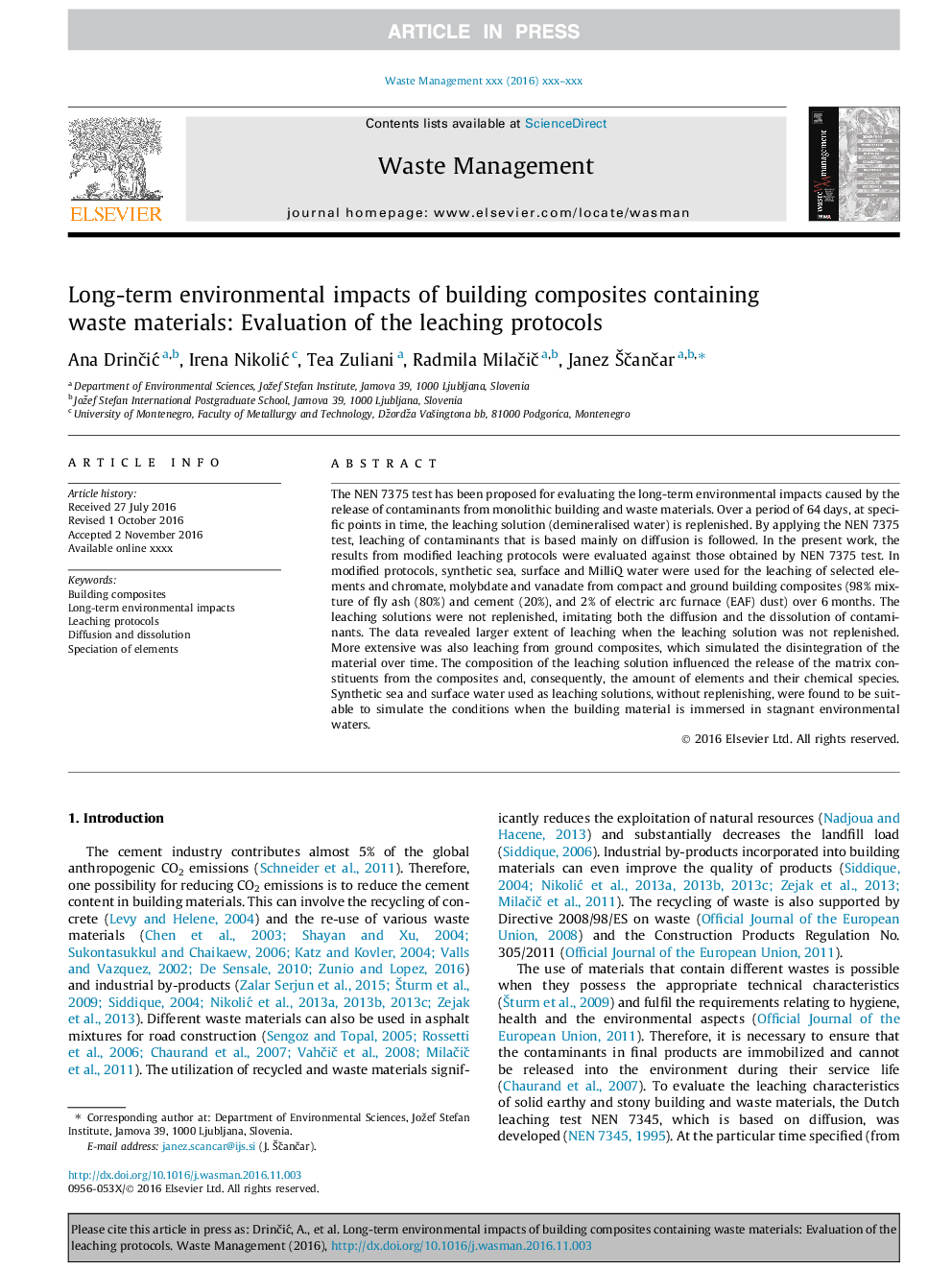| Article ID | Journal | Published Year | Pages | File Type |
|---|---|---|---|---|
| 5757038 | Waste Management | 2017 | 10 Pages |
Abstract
The NEN 7375 test has been proposed for evaluating the long-term environmental impacts caused by the release of contaminants from monolithic building and waste materials. Over a period of 64Â days, at specific points in time, the leaching solution (demineralised water) is replenished. By applying the NEN 7375 test, leaching of contaminants that is based mainly on diffusion is followed. In the present work, the results from modified leaching protocols were evaluated against those obtained by NEN 7375 test. In modified protocols, synthetic sea, surface and MilliQ water were used for the leaching of selected elements and chromate, molybdate and vanadate from compact and ground building composites (98% mixture of fly ash (80%) and cement (20%), and 2% of electric arc furnace (EAF) dust) over 6Â months. The leaching solutions were not replenished, imitating both the diffusion and the dissolution of contaminants. The data revealed larger extent of leaching when the leaching solution was not replenished. More extensive was also leaching from ground composites, which simulated the disintegration of the material over time. The composition of the leaching solution influenced the release of the matrix constituents from the composites and, consequently, the amount of elements and their chemical species. Synthetic sea and surface water used as leaching solutions, without replenishing, were found to be suitable to simulate the conditions when the building material is immersed in stagnant environmental waters.
Related Topics
Physical Sciences and Engineering
Earth and Planetary Sciences
Geotechnical Engineering and Engineering Geology
Authors
Ana DrinÄiÄ, Irena NikoliÄ, Tea Zuliani, Radmila MilaÄiÄ, Janez Å ÄanÄar,
